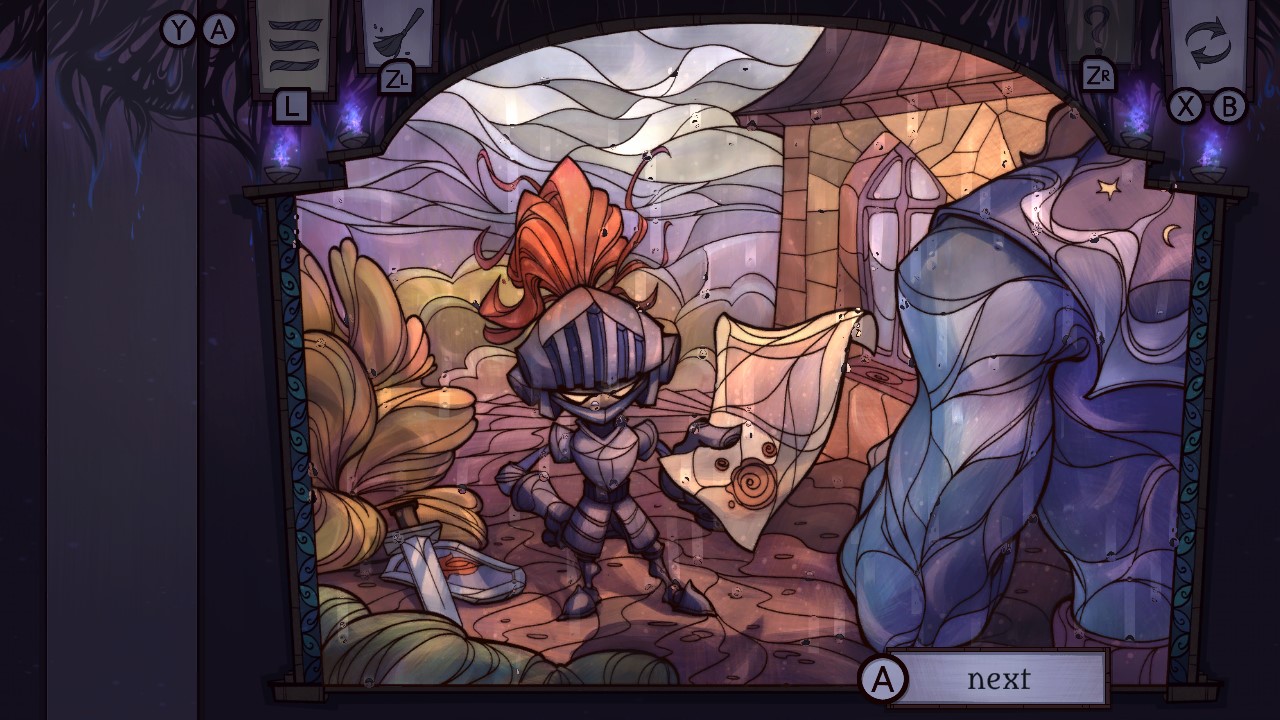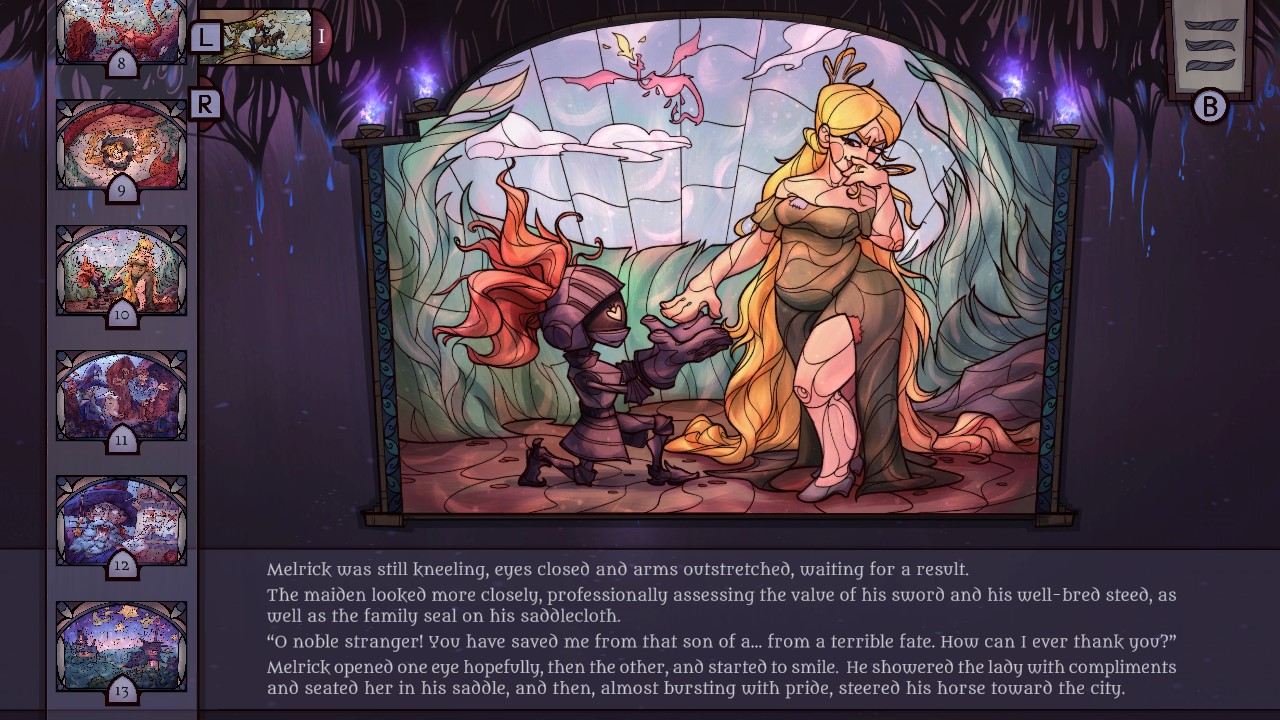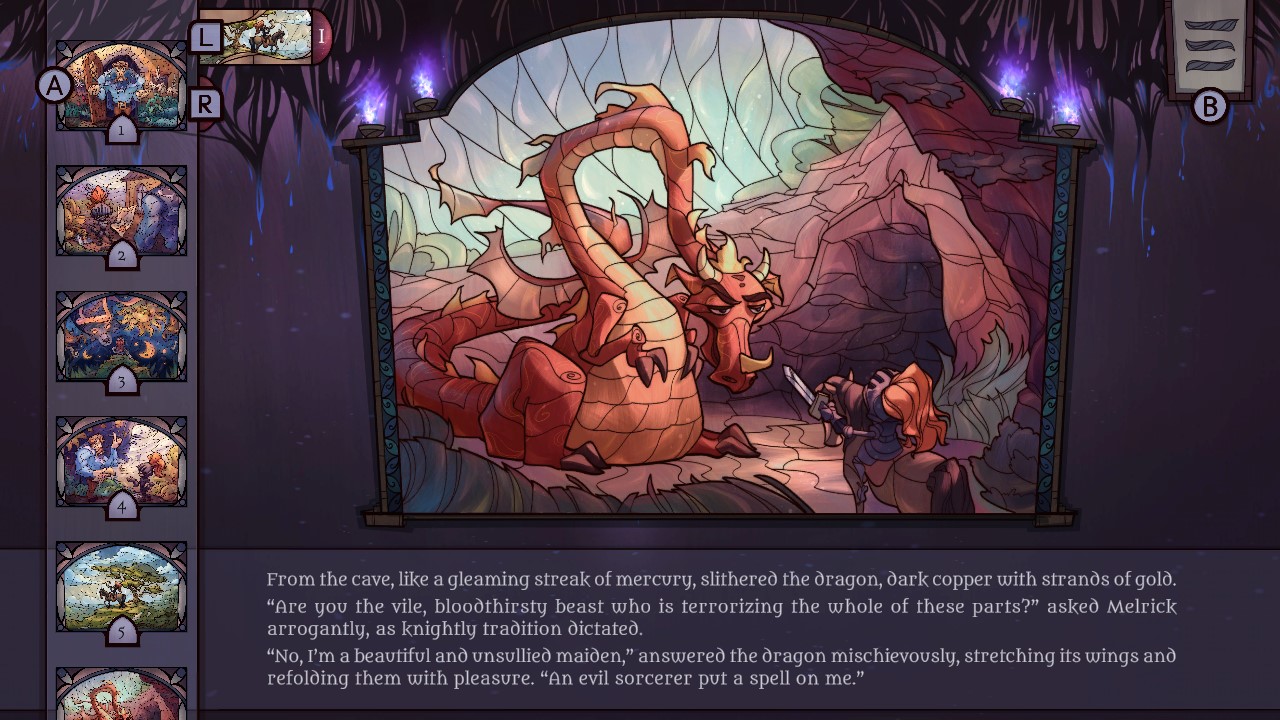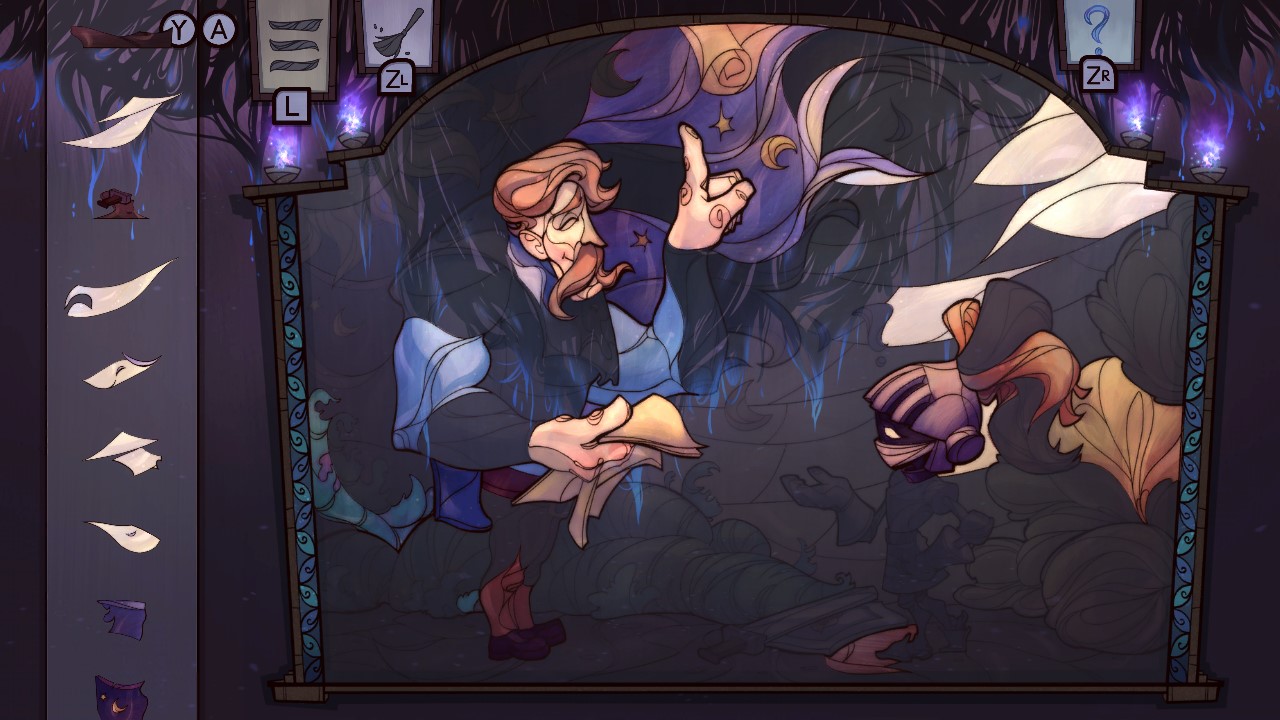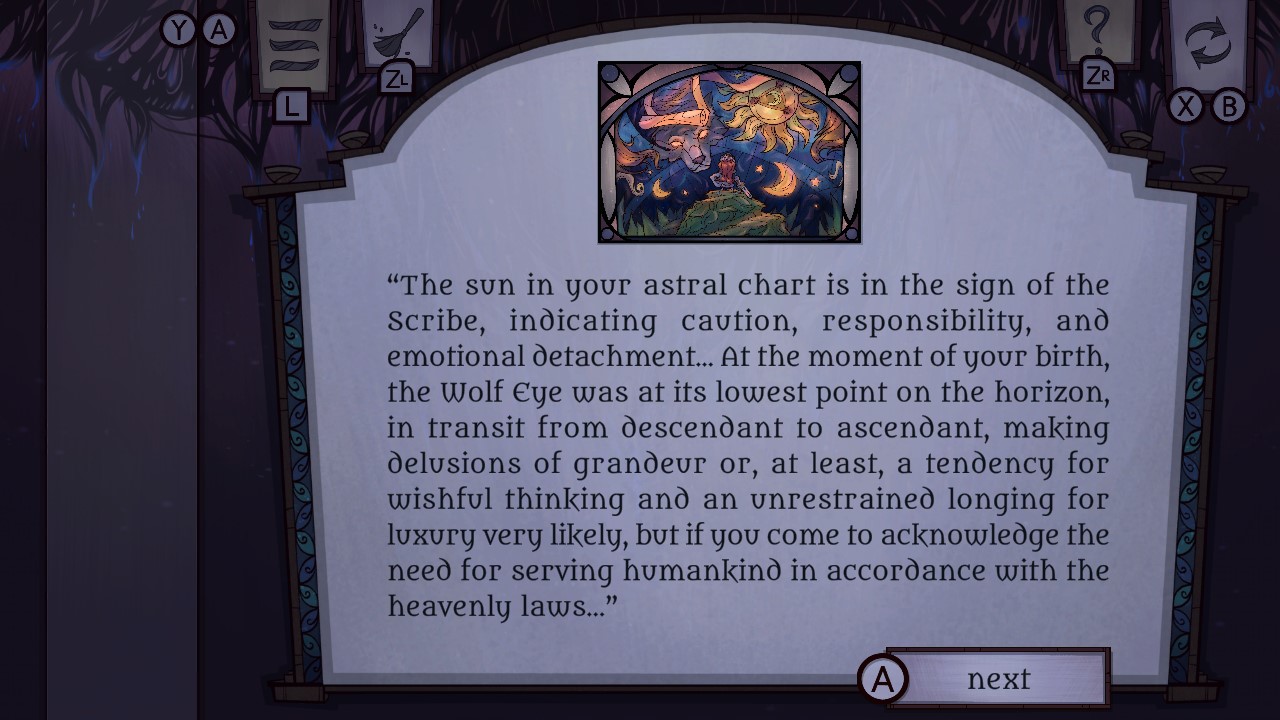Fantasy fables with some assembly required.
Mosaic Chronicles Deluxe for Nintendo Switch is meant to relax you. Of course, that’s with the assumption you find puzzle assembly relaxing. If so, and if you don’t mind transferring the process to the screen, there are plenty of puzzles here (along with some fun stories) to keep you entertained.
It’s the stories that help Mosaic Chronicles Deluxe stand out from other virtual puzzle games for the Switch. That’s important because we’ve seen this general setup and this visual style before. What is it that makes stained glass mosaics conducive to puzzle assembly? The outlines? The distinct color separation? No matter. If you look at these screencaptures and think, “Didn’t I play this already?” take that as an invitation, not a deterrent.
The puzzles are the main attraction here, and you’ll get 50 to fill your time. Unlike in similar games, however, they’re tied together with two stories of 25 puzzles each: A Bit of Horoscoping and The Lucky Knot. I’ve learned the stories are inspired by the works of Olga Gromyko, a fantasy author from Belarus. I appreciate this approach to game development, as I always enjoy being introduced to authors I’ve never read. Olga’s stories here are clever, and I imagine some who play Mosaic Chronicles Deluxe will proceed to check out her work without the interruption of puzzle assembly.
The levels start with a brief bit of narrative, and you’re then presented with a mosaic image to assemble.
The complexity of the puzzle will be determined by your pre-game difficulty selection, ranging from Very Easy to Hard. Your choice determines factors such as the number of pieces to assemble, how many need to be rotated to properly fit, and how much time passes before you’re offered a hint. The puzzles have no time cut-off, so the difficulty really just determines duration; you can breeze through them or you can take things slowly. On the card table, do you prefer 1,000 piece puzzles or are 250 enough? Mosaic Chronicles Deluxe will cater to your level of patience.
Unfortunately, a couple gameplay items will test that patience no matter what your difficulty level. The first is piece placement, which is a bit awkward with the Joy-Con. The pieces are all stacked in a column on the left-hand side of the screen, so you see only a few of them at a time. You scroll through the pieces to select the one you want, then use the right stick to move into place. X and B can rotate it if necessary. It’s obviously a UI developed for mouse gameplay, and there’s really no other way to do it with a gamepad.
What I don’t like is how the piece column resets each time you go back to select another item. If you’re looking for pieces in a particular section, this means scrolling through the same pieces numerous times to get to the ones you want. If you’re playing on a higher difficulty level with a lot of pieces, that’s a lot of wasted time.
It’s also a lot of time spent listening to the same music loops. The music is OK, but these puzzles can take a long time to complete. It would be hard for anything other than ambient sounds to not get annoying in such a case, so ambient sounds would’ve been the way to go here.
The developers also made the odd gameplay choice to have the puzzle pieces snap into place regardless of whether they’re attached to another piece or an edge. This means you can grab a piece and move it around randomly on the picture until it just clicks. It has to be oriented properly, of course, but it still becomes too easy to cheat your way through the process.
In fact, the combination of clunky piece management and placement snapping eventually dictated the way I played the game. I’d just grab the top piece, pull up the completed image with the R button to determine its location, then drag it there until it snapped. Next piece, done. Next piece, done.
Is that cheating? I don’t think so, since the developers gave me that option. It also meant fewer music loops, and it helped me move the stories along more quickly. Once done, in fact, I reread the stories without the puzzles to get the full literary effect.
Mosaic Chronicles Deluxe is, therefore, an odd recommendation. The actual gaming experience could certainly be tightened up; I think puzzle fans will acknowledge they’ve played better games in the virtual realm. But the manner in which each puzzle serves the stories—both of which are well-told—is unique enough to make this game worth your time. How much time is for you and your difficulty setting to determine.
Review: Mosaic Chronicles Deluxe (Nintendo Switch)
Good
Mosaic Chronicles Deluxe uses virtual puzzles to serve two fables by fantasy author Olga Gromyko. The puzzle gameplay is not as tight as in competing games on the Switch, but the stories provide enough incentive to compel players through the game’s 50 levels.

